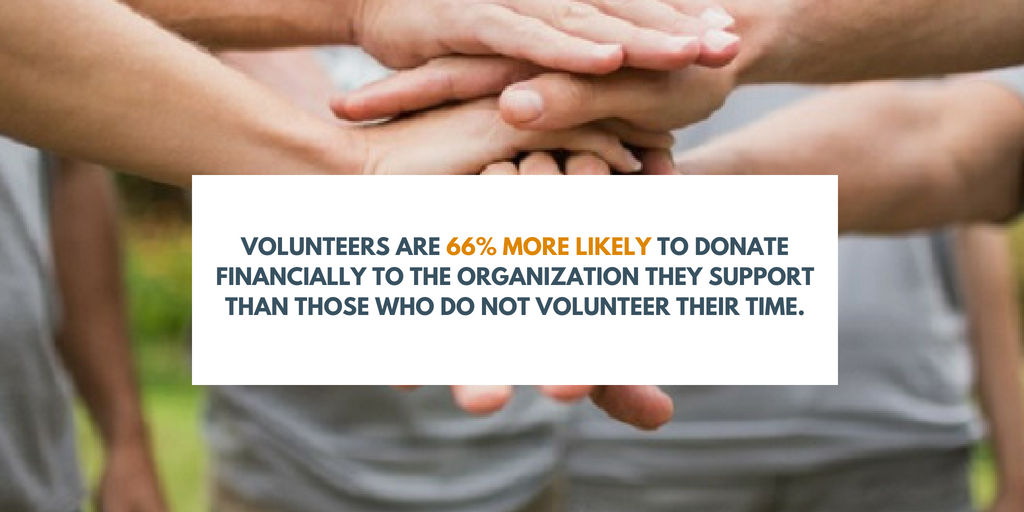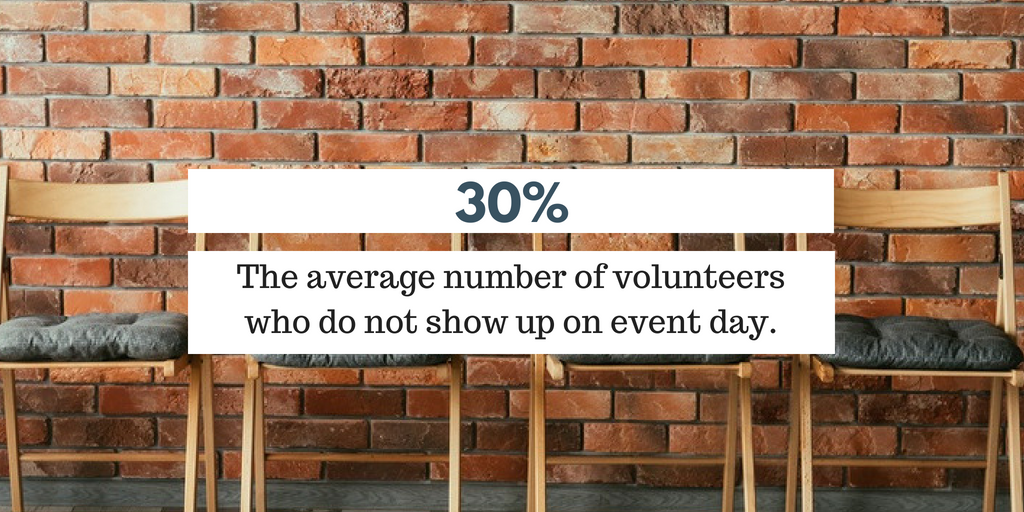

Related Posts
Subscribe to Our Blog
Subscribe to receive email notifications every time we publish new insights, news, and thought leadership to our blog.

One of the most important components of running a successful nonprofit is volunteer recruitment. Recruiting volunteers to fill opportunities that push an organization closer to its mission and goals is at the top of the priority list for most nonprofits today. The most strategic recruitment plan in the world, however, does not stop the risk of a no-show.
Volunteer no-shows happen to all nonprofits and can cause chaos, stress, and frustration if a plan and process to handle attendance issues are not in place. Oftentimes, a no-show can cause a volunteer coordinator to scramble to identify a replacement for a much-needed role. The increase in stress and pressure, due to no-shows, can impact a volunteer coordinator's ability to reach goals and outlook on their position.
Developing a strategic plan can help an organization create a roadmap for dealing with no-shows. Handling volunteer no-shows is a sensitive subject and careful planning can make an attendance matter much easier to control. Here are a few things nonprofits should remember and tips on how to prepare for volunteer no-shows.
Sometimes it is easy to forget that volunteers provide their time in exchange for no financial value. Because volunteers are providing a non-paid service handling no-shows should be done delicately. Being overly aggressive with no-show volunteers can impact an organization’s retention rates.
Depending on the situation, and how many times a no-show has occurred, a volunteer with attendance issues could still offer value in the future. Nonprofits also must remember that there is a thin line between volunteers and financial donors.
A negative confrontation, perceived by a volunteer, could impact multiple campaigns and cost an organization a valuable relationship.

There are several variables that a nonprofit should remember when developing a plan to avoid and handle no-shows. These components include communicating effectively, providing a process for both volunteers and staff, having a backup plan, and creating a system for opportunity reminders.
The first step in preparing for no-shows and schedule changes is outlining communication. How should staff communicate with volunteer no-shows? How should volunteers communicate changes to their schedule that prevent fulfillment? Organizations with effective communication are 50% more likely to have lower turnover.
Communication with a no-show volunteer should be:
Empathetic
Friendly
Understanding
Flexible
The goal of communication after a no-show should be to salvage the relationship and to understand what caused the action!
In many cases, the process caused the no-show to happen because of ineffective communication.
If a nonprofit does not have a formal process for volunteers to change or cancel their opportunity sign-up then the risk of no-show is high. Supporters should be able to quickly notify a nonprofit of a schedule change or need to cancel. The easier the process, the greater the chance that volunteers will follow it.
Another aspect of effective communication is providing volunteers with opportunity reminders. Nonprofits can use opportunity reminders to limit no-shows and remind volunteers to communicate any changes that would prevent them from fulfillment. Reminders should be a key component of an organization's no-show prevention strategy.
A volunteer management solution can help a nonprofit deploy a systematic process for schedule changes/cancellations/automatic reminders.

Regardless of how a volunteer program is run no-shows happen. Nonprofits must be prepared in the event of a scheduling conflict or no-show. One of the best ways for organizations to adjust to no-shows is by over-staffing and recruiting floaters. According to research, 30% of volunteers do not show up on event day. Floaters can help! A floater is an individual who is available to fill a shift on call.
Organizations that build contacts into their volunteer database, who are available to fill roles on short notice, will be better prepared to handle scheduling issues on the event day.
Nonprofits can identify floater prospects by reviewing their most active volunteer contacts.

Manual registration and check-in processes are prone to mistakes and involve an abundance of paperwork. Processes that rely heavily on a paper trail do not typically provide flexibility or adaptability. Nonprofits that want to measure volunteer attendance and adjust quickly should utilize technology to streamline the volunteer management process and measurement.
Volunteer management software makes it easy to track and record volunteer check-ins, in real-time, eliminating the risk of missing an unfilled role on the event day. Management software can offer organizations transparency and allow them to make adjustments, due to no-shows, on the spot. Software solutions, like VolunteerHub, also offer features, such as virtual kiosks, to create an even more automated event check-in process for nonprofits and supporters.

Thanking volunteers often and emphasizing the importance of roles in reaching the mission is another great way for nonprofits to reduce no-shows. Thanking supporters should also be included as part of your organization's no-show policy.
Organizations can re-engage volunteers, who have had a no-show, and explain why their commitment is so important. Doing so will help to create ambassadors and life-long supporters. As stated above, empathy and understanding are key in communicating with no-show volunteers. Organizations that demonstrate no-show volunteers value have an opportunity to utilize them in the future….and potentially for a long time.
Mistakes happen. Sometimes volunteers are unable to fulfill their commitment to a cause. How a nonprofit handles the situation, communicates with a no-show and uses the opportunity to push a relationship forward will have an impact on the organization’s retention rates. Being prepared and deploying volunteer software to make the management process streamlined is one of the best steps an organization can take to limit the repercussions of volunteer no-shows.
Subscribe to receive email notifications every time we publish new insights, news, and thought leadership to our blog.